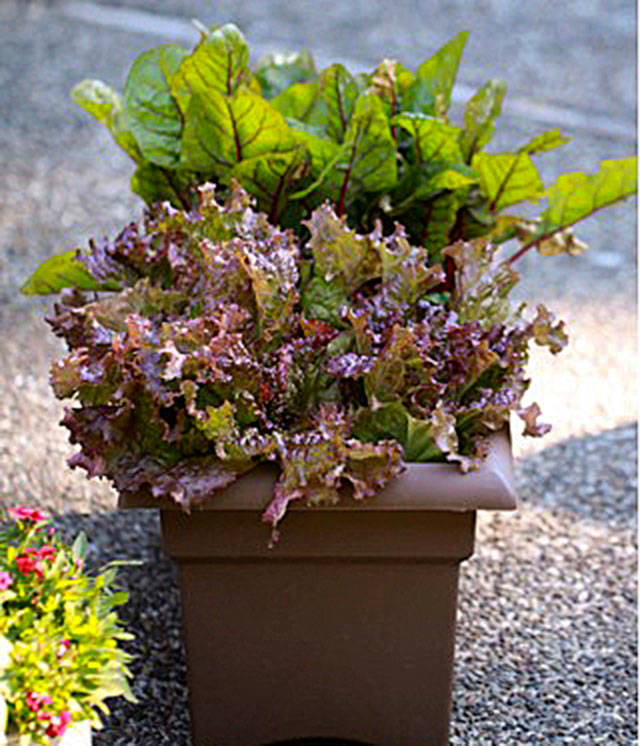Do limited time, space or knowledge keep you from growing your own backyard garden?The obvious reasons to consider container gardening are dealing with small spaces, pest management issues or poor soil conditions.
Let’s think inside a box for a moment and imagine containers for other reasons such as time management, accessibility for the disabled, or even just an interesting new hobby.
Ready? The first decision is location. You must decide what plants you would like to grow, which in turn leads you to the type of containers you will need. Add the right soil, water and fertilizer and you are on your way. As for weeding, forget about it! Well, not all about it, but it will be much easier in a container.
Location
The best location will have as much sun as possible, optimally six to eight hours a day, however, a host of vegetables will succeed in a less than optimal spot. Other considerations are easy access to water, close to the kitchen, and providing wind protection. If you are creating elevated raised beds for accessibility, choose an area where the path can be smooth enough for people with limited mobility and the spacing can accommodate a wheelchair.
Plants
Make a list of plants you like to eat. Research seed packages and plant information, selecting varieties suitable for container gardening. Check local nurseries for plant starts such as tomatoes, to speed up the growth process. Ask nurseries for advice on determining varieties appropriate for the given conditions. Determine the best picks for you and have fun experimenting.
Containers
You can use just about any container that will hold soil, drain well and not leach toxins. Consider using a ceramic pot, a felt grow bag, a lined milk crate or a window box. Don’t overlook buying or building containers; a simple box design can be modified to meet your special needs.
Soil
Soil used in containers must be well-draining, clean, able to hold moisture, and as light as possible to prevent compaction. There are many good “recipes” to make your own garden soil but unless you have a huge project, buying a good quality potting mix at the garden center is a smart idea.
Water
You will need easy access to water and will probably need it every day during summer as containers can dry out quickly. A watering can will work but providing a simple drip system is ideal. Don’t be intimidated; look at inexpensive all-in-one drip irrigation kits at local retail stores. Plants are much happier with a regular water schedule.
Fertilizer
Depending on your preference, either organic or inorganic fertilizer is effective if labeled for edible crops and used according to directions. It is important to choose a complete fertilizer, meaning it contains the three basic nutrients Nitrogen (N), Phosphorus (P) and Potassium (K). In the past, inorganic fertilizers were easier to use, however, complete organic fertilizers are becoming more available in stores and online.
Fine print
Some crops, such as tomatoes, berries and a few varieties of citrus can be successfully grown in containers. However, they may need more exacting conditions that will require some specific research. For example; tomatoes will need deep soil, blueberries will need acidic soil, and citrus will need to be protected from freezing.
A good place to learn more about container gardening is at the Washington State University website, (gardening.wsu.edu). This site has a full menu of peer researched gardening publications that are both educational and easy to read.
Happy container gardening!
Bob Cain and Susan Kalmer are Clallam County Master Gardeners.


